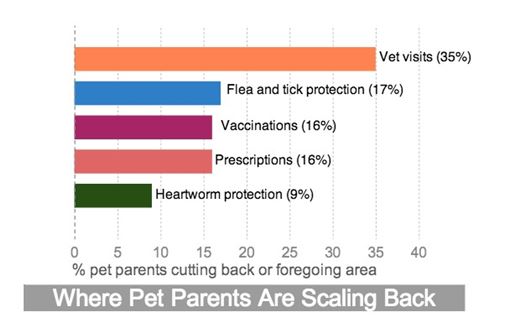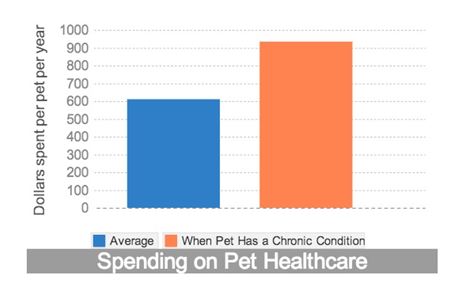Pet Healthcare Costs and Solutions
Our friends at PetCareRx.com, a leading online pet pharmacy, conducted a study of over 1,100 pet parents beginning in August. The results showed how dramatically the rising costs of pet healthcare are influencing pet parents’ lives and lifestyles. We found this data so intriguing that we wanted to share it with our community. Please read on to find out more and if you have any questions and/or comments we’d love to hear from you!
Healthcare costs for pets are rising dramatically and pet parents are making decisions about where to cut back and how to achieve more value – some of them savvy, but some of these decisions are potentially dangerous to their pets’ short- and long-term health.
In our survey we found that 3 out of 4 pet parents are concerned about the rising costs of pet healthcare and their ability to afford care for their pets. That statistic is not so surprising when you see that over the past five years, the annual costs for caring for a dog have increased 15% to $1,649 while cat care costs have jumped 28% to $1,271 per year (according to the American Pet Products Association). During this same time period, median U.S. household income declined 7.5%.
What Pet Parents Would Give Up To Pay For Pet Healthcare
73% of pet parents said they would consider paying almost any amount of money to keep their pet healthy
- 83% said they would cut back on eating out or going out
- 72% would be more frugal on other household expenses
- 66% would skip a vacation
- 8% would move to a less expensive home!
Despite intentions to provide the best care they can for their pets, pet parents are sometimes employing dangerous tactics to manage the costs of their pets’ healthcare. 35% of pet parents are cutting back on or skipping recommended vet visits in order to save money. Flea, tick, and heartworm protection, vaccinations, and prescription drugs are other areas pet parents are choosing to cut back on. These compromises potentially expose pets to dangers and large healthcare bills down the line.
What’s more, nearly 1 in 5 pet parents have taken one of these potentially dangerous cost-cutting steps: delayed buying a prescription, split pills or used less of a prescription than needed, or declined to buy a prescription.
Costs of Pet Healthcare Increase 53% When Pets Are Sick
On average, pet parents spend $611 per year per pet on healthcare related expenses like vet visits, prescription medications and diets, flea and tick protection, and emergency procedures. How does that increase when a pet has a chronic condition? Pet owners of these pets spend an average of $935 per year per pet on healthcare expenses. That’s a 53% increase over the average. And some pet parents pay much, much more — sometimes into five figures.
How Can Pet Parents Get Value Without Risking their Pets’ Care?
An encouraging 41% of pet parents have saved by learning more about preventative health and wellness. Buying pet medications online is a popular way to save money with 38% of pet households surveyed taking advantage of the lower prices online. 76% Google their pet health related questions to find answers and guidance online. When they land on PetCareRx.com, pet parents can find over one thousand veterinarian-verified articles, all available to help them learn more about caring for their pet.
Introducing PetPlus, the First-Ever Benefits Card for Pets
Solutions like buying medications from reputable online pharmacies make a big difference in pet parents’ financial situation, and are also poised to improve their pets’ physical health. That win-win thinking is at the heart of PetPlus.
PetPlus, the new prescription card plan for pets from PetCareRx, offers savings of up to 75% on prescriptions, and additional savings on vet visits, vaccinations, and more – including savings right here on Rover.com! To learn more about this new way to manage the cost of pet healthcare, visit PetPlus.com.
Kat Sherbo is an editor and blogger at PetCareRx and The Wet Nose Press. Contact her at ksherbo [at] petcarerx [dot] com with any questions or if you’re interested in learning more about the study.





